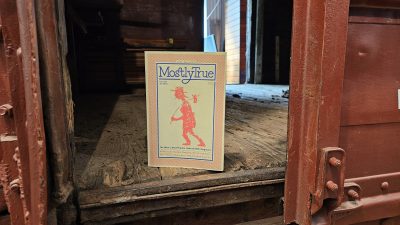The Northwest Railway Museum is happy to have new intern Spencer Lybbert. Spencer will be helping us write weekly blog content. The first few posts will be book reviews on books available in our bookstore and in our library.
 Bill Daniel’s Mostly True is an interesting look into the storied history of train graffiti and the folklore that surrounds it. Taking the format of a book length magazine, Mostly True is full of interviews, reader submitted stories, photos, historical documents and illustrations. Though it lacks a core directive (it is a magazine after all), it weaves together the past, present, and future of “hobo graffiti” in a very engaging way.
Bill Daniel’s Mostly True is an interesting look into the storied history of train graffiti and the folklore that surrounds it. Taking the format of a book length magazine, Mostly True is full of interviews, reader submitted stories, photos, historical documents and illustrations. Though it lacks a core directive (it is a magazine after all), it weaves together the past, present, and future of “hobo graffiti” in a very engaging way.
The reader submitted stories are often very funny and interesting spanning multiple decades from the 1970’s to the present. They offer a very frank, no frills look at what it means to be a “hobo” traveling the US via illegal train hopping and the culture and community that comes from it. It also provides an interesting look into how the US has changed socially and economically during the last century and our current one. For many years these artists, known for leaving thousands upon thousands of chalk or paint illustrations on the side of train cars, have been unknown. Mostly True seeks to find the people behind the drawings. Most prominently it features the moniker of Bozo Texino, a mysterious drawing that had a long history appearing on tens of thousands of train cars from the early 1900’s up to the 80’s. It traces the roots and the influence as well as finding the artist responsible for nearly 30,000 marked train cars.
The most impressive part of the book was a large section of several influential artists being interviewed separately about what they thought of each other’s impact and art. Throughout the book you will find lots of comics, photos and excerpts of articles and advertisements from throughout history. These really help it feel like a magazine and they often piqued my interest. It really helps you visualize this progression through history when you can see with your own eyes the ways the train art has progressed and stayed the same. I found this to be a very enjoyable read, that provides insight into a culture and artform that has been lost in time.

